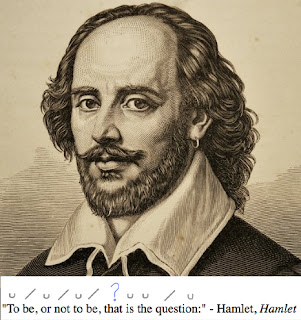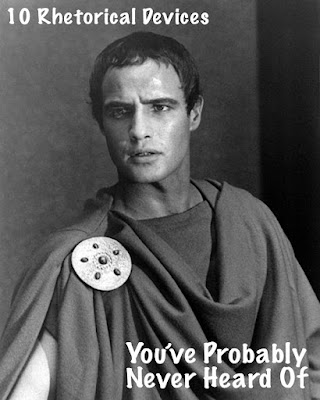Witches in Shakespeare
Witch. 1) woman thought to have magical powers, especially evil ones. 2) Halloween figure popularly depicted as wearing a black cloak and a pointed hat and flying on a broomstick. The first image that pops into mind as a witch is a green-skinned, warty woman cackling as she flies into the night. But how exactly did that image come about? Shakespeare's many, perhaps self-contradictory ideas express a very different interpretation.
In Macbeth, the Three Witches are nuanced, not explicitly defined characters who ultimately guide Macbeth to his downfall. They are the first characters we meet in the entire play, setting an eerie tone and foreshadowing doom to the other characters and Scotland. In this way, the Three Witches are the main agent of the play––tempting Macbeth to commit various murders to gain the supposedly fated position of King of Scotland. The Witches speak in strict meter and rhyme, often together, which gives the audience the sense that they are always making incantations.
There exists much controversy over the gender, physicality, and humanity of the three Witches, and each production often has its own interpretation. Shakespeare’s description of the Witches cleverly leaves this room for nuance, allowing directors and dramaturges to textually support any analysis they may craft of these mysterious characters.
In the opening scene of the play, the Three Witches plan their next meeting, while revealing their relationship among themselves and with Macbeth. Shakespeare portrays the Witches as a part of nature by indicating that their meetings are determined by the weather, specifically the ominous “thunder, lightning, or in rain.” (I.1) The Witches each have a familiar––a spirit creature that guards and guides them––to which they respond in the scene: the First Witch to Graymalkin (literally, gray cat), the Second Witch to Paddock (a toad), and the Third Witch to an unknown familiar. Their signature paradox, “Fair is foul; and foul is fair:” (I.1), establishes the Macbeths’ skewed moral compass and anticipates the tension between appearance and reality evoked throughout the play.
The Witches next appear “[i]n thunder” (I.1) before Macbeth learns of his becoming Thane of Cawdor. Their referrals to each other as “sister” (I.3) and to themselves as “the weird sisters” (I.3) hint that the Witches could be female. However, the Witches also have “beards,” (I.3) which suggests that they belong to both or neither gender. The First Witch tells the story of her interaction with a condescending sailor’s wife, who refused to give the First Witch her “chestnuts.” (I.3) As punishment, the First Witch plans to interfere with her husband’s journey at sea. The First Witch does not have the power to capsize the ship and drown him, but can make his voyage miserable. This tale portrays the Witches as subject to the same common vice of vengeance as the royal human characters in the play––perhaps a suggestion of their being human outcasts as opposed to supernatural. They do not have control over decided outcomes in the future, but they can change the progression of events along the way. The First Witch pulls out a gory charm, a “pilot’s thumb” (I.3), that is perhaps a source of power. The Witches realize that Macbeth is approaching, and then complete an incantation “hand in hand” (I.3), the purpose of which is unclear. It cannot attract Macbeth to the Witches––because he is already arriving––but it may render Macbeth weaker to resist the Witches’ temptation. Both Banquo and Macbeth, upon meeting the Witches, question their earthly existence in “what seem’d corporal melted/As breath into the wind.” (I.3) Both characters use nature to try to make sense of the Witches, reinforcing the idea that the presence of the supernatural is somehow inherent to the earth as humans know it.
Act III, Scene 5 is comprised of a scene with Hecate, a goddess associated with sorcery and ghosts, that has become a subject of dispute––it remains unclear whether that scene was written by Shakespeare or added later. Hecate’s imagery, of “the corner of the moon,” (I.5) the “vaporous drop profound,” (I.5) and the “foggy cloud” (I.5) feel rather fantastical, and out of place with the Three Witches’ gory and nature images. Hecate is beckoned away, not by an imagined calling as the Three Witches were in the first scene of the play, but by a song with lyrics––seemingly uncharacteristic of both the play and the Witches’ characters.
Perhaps the most famous scene of the Three Witches, Act IV, Scene 3 occurs when Macbeth visits the “secret, black, and midnight hags” (IV.3) to demand them to tell his future. In the first half of the scene––before Macbeth arrives, the Witches add various gory ingredients to a cauldron. As each takes a turn adding ingredients, they speak in trochaic tetrameter, thus setting themselves distinct from the explicitly human characters of the play. They cast their spell with the well-known lines, “Double, double toil and trouble; Fire burn, and cauldron bubble.” (IV.3) Hecate makes a brief appearance, equally disputed as her previous scene, once again using magical imagery of “elves and fairies” (IV.3)” and being called away by a song with lyrics. In the second half of the scene, the Three Witches conjure their “masters” (IV.3) to give Macbeth both warnings and comfort. These apparitions take the forms of “an armed Head,” (IV.3) “A bloody Child,” (IV.3) and “a Child crowned, with a tree in his hand.” These stage directions, among the most specific Shakespeare has written, convey that Shakespeare had specific intentions in both the form and the speech of the Three Apparitions. Like the Witches, the Apparitions lull Macbeth into the illusion of security, acceptance of which proves to be his fatal flaw. They vanish again, and, having completed their task of deceiving Macbeth, do not appear for the rest of the play.
Shakespeare was certainly a pioneer of the connotation of witches plotting the doom of human society––after all, they are portrayed as the catalysts of Macbeth’s murder and reign of terror. And yet, productions vary completely in their portrayal of these characters. Perhaps the Witches simply suggested to Macbeth a future of which they were unsure, and trusted him to execute the action and prove them correct. Perhaps they were able to tell the future, and wanted to create terror within the society to which they could not belong. Perhaps they truly did affect the turn of events in Scotland. We will never know.




Comments
Post a Comment
All comments are moderated by the Green-Eyed Blogger to avoid spam. If you do not see your comment right away, do not worry; it is simply undergoing our routine moderation process.